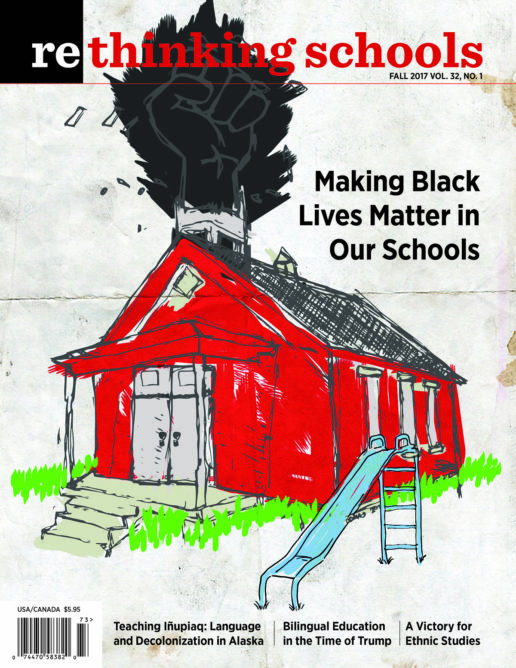Preview of Article:
The Struggle for Bilingual Education
An Interview by Bob Peterson with Bilingual Education Advocate Tony Báez
Illustrator: Barbara Miner
Tony Báez is a longtime advocate for bilingual education. When he was a child, his parents moved regularly between New York City and Puerto Rico as migrant garment workers. After 6th grade, he remained in Puerto Rico until his early 20s when he moved to the United States and became involved in political movements in the Chicago and Milwaukee areas. Over several decades, Báez has worked as a community organizer, expert on bilingual education litigation, university instructor, and high school principal. He has also served as vice president of the Milwaukee Area Technical College, as executive director of Centro Hispano Milwaukee, and currently serves on the Milwaukee Board of School Directors. Bob Peterson (Contact Me) is a founding editor of Rethinking Schools and a founder of La Escuela Fratney in Milwaukee. He taught 5th grade for 30 years and served four years as president of the Milwaukee Teachers’ Education Association. In the following interview, Báez talks about the history and current state of bilingual education, and describes how parents and educators successfully fought for a maintenance K-12 bilingual program in the Milwaukee Public Schools. This interview was adapted from a longer interview that appears in the new book by Rethinking Schools, Rethinking Bilingual Education.
Bob Peterson: How did bilingual education start in the United States?
Tony Báez: In modern times it started in the 1960s, as people in the Southwest of the United States and Cuban immigrants in Miami pushed for bilingual education to retain their home languages and improve the academic situation for their children. It emerged in the midst of the Civil Rights Movement. These were communities in battle, communities fighting for improvements in services. For example, in New York City, there was the community control movement. Evelina López Antonetty, a parent leader who was involved in improving schools, gradually began talking about bilingual education and about creating parent universities to prepare families to fight for bilingual education. Chicano leaders like Rodolfo “Corky” Gonzales in Colorado connected Latino and Chicano cultures to the notion that bilingual/bicultural education is something we all deserve.

